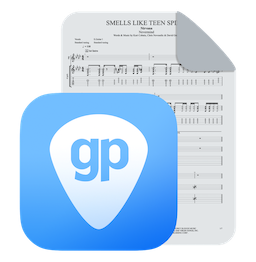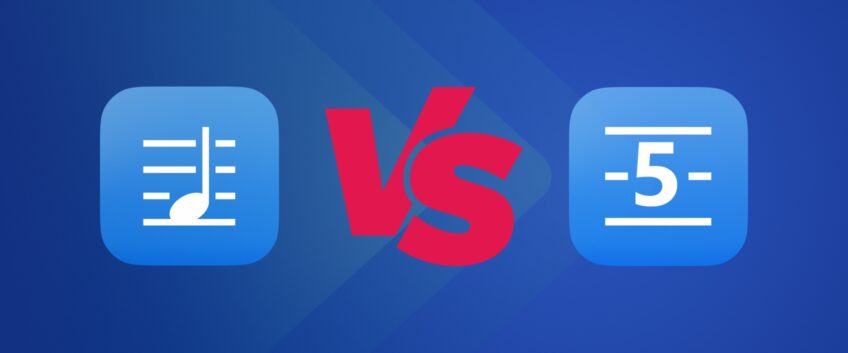
Tablature vs Standard Notation: which one should you choose to boost your guitar skills?
- rosanna-toto-guitar-solo-standard-notation.gp
- rosanna-toto-guitar-solo-tab-notation.gp
There are several ways to approach a piece, a melody, a riff, or a chord progression: first by ear, the oldest method, or through written notation. In this tutorial, we’ll focus on the latter, highlighting the two most common forms used in Guitar Pro: Tablature notation and Standard notation.
Note: The goal here isn’t to oppose these two writing systems, but to show you how to take advantage of the strengths of each.
What are the benefits of standard notation for your learning?

Standard notation is often overlooked by guitarists and bassists, but there are still a few things worth knowing that could be very useful when using Guitar Pro. This form of notation is a universal musical language, present in most cultures around the world.
Even if you mainly use tablature, standard notation, more commonly known as sheet music or “solfège”, helps you learn the names of notes, which is essential for truly understanding your instrument.
You can even display the guitar or bass fretboard in Guitar Pro, allowing you to see the note names in real time as your score plays back.
View > Show Fretboard View
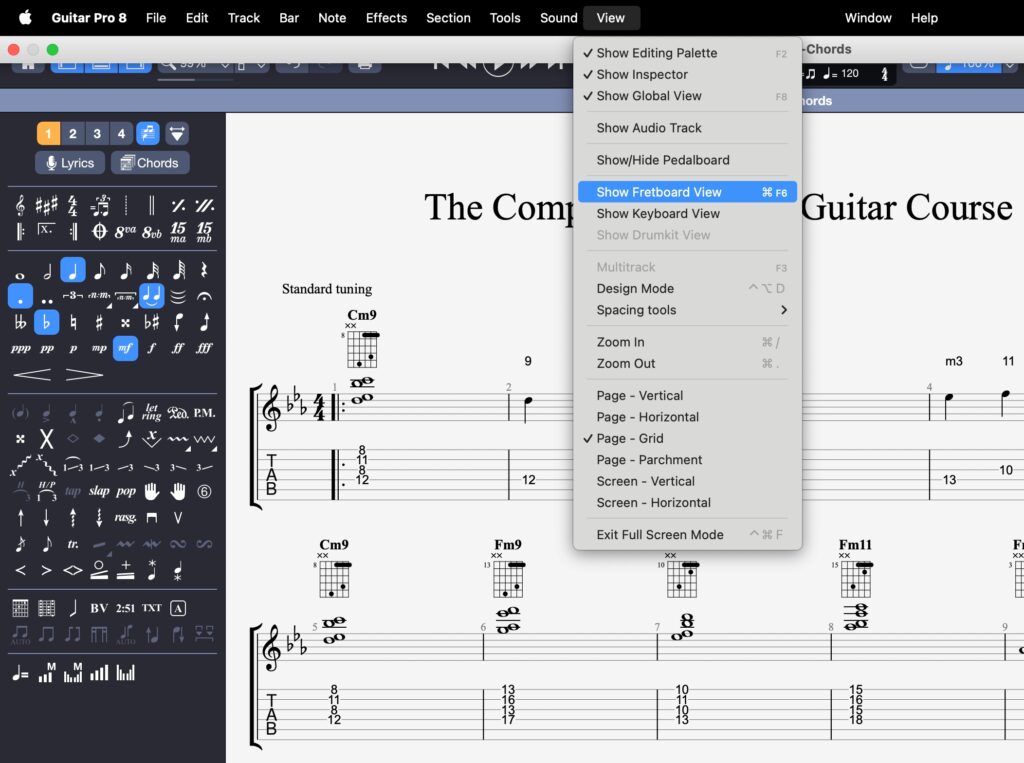

Several options are available, such as left-handed mode or highlighting the notes of the current key. An essential tool for deepening your knowledge of the fretboard.
Here’s how the guitar fretboard is displayed in Guitar Pro:
Guitar Pro tip: You can choose your notation type in the Track Inspector ⬇️
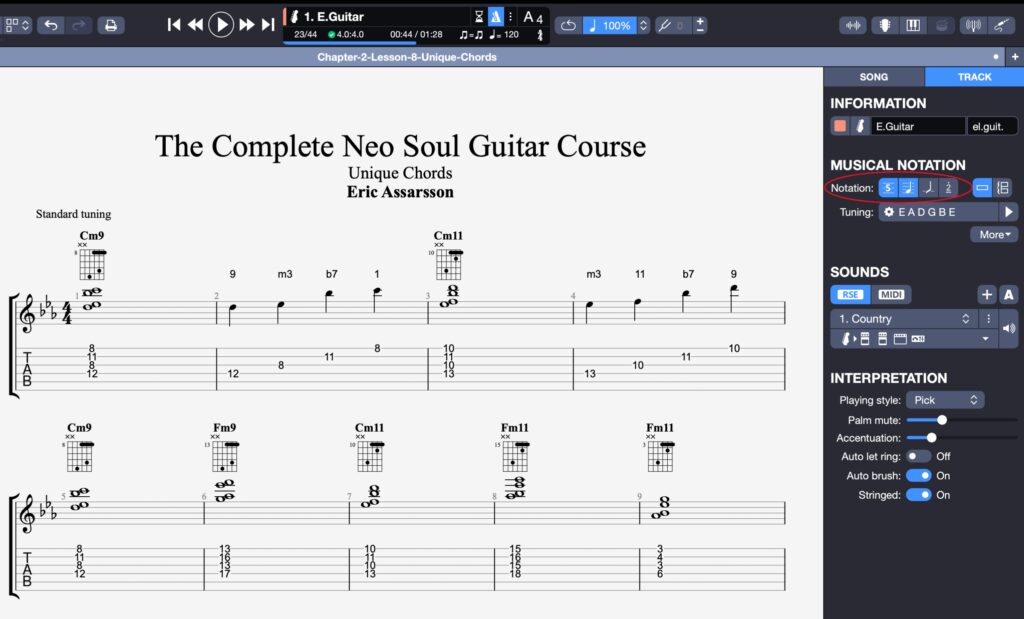
The second key advantage of standard notation is rhythm indication. Displaying the staff above the tablature gives you both the fret positions and rhythmic information for your piece or exercise.

As an example, here’s a Steve Lukather solo from Rosanna by Toto. You can download the Guitar Pro file to practice. It’s written here in standard notation, but you can easily switch to tablature in Guitar Pro to see the difference. Your turn to play!
Don’t wait, have fun by downloading the Guitar Pro demo!
Tablature: The Guitarist’s GPS

Long dismissed by “purists,” tablature is, in my opinion, a highly intuitive and visual tool that makes music more accessible to players who haven’t studied at a conservatory from a young age.
Its main advantage is that it immediately shows which fret each note is played on, allowing you to learn songs faster. Until recently, its biggest limitation was the lack of rhythmic information, numbers on strings don’t tell you much about timing!
As mentioned earlier, you can display Standard notation above the tab to see rhythm along with fret numbers. But thanks to Guitar Pro, you can now show rhythmic values directly on the tablature by simply disabling Standard notation in the Track Inspector.

Here’s the Rosanna solo again, this time in tablature. Which version do you prefer?
Play Rosanna in mySongBook 🎸
Other Notation Systems in Guitar Pro
Slash notation
A simplified writing form, typically used with chord symbols. It’s mainly designed for rhythm playing and often provides a clearer view than staff or tab notation.
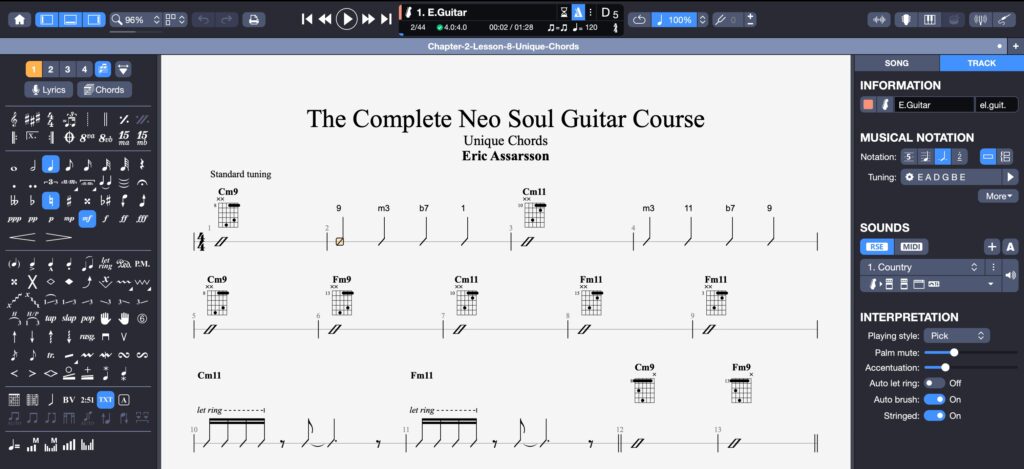
Numbered notation
Originating from China, numbered notation displays the intervals of a given key. For chords, the lowest note is taken as reference. This system is particularly efficient for transposing music.
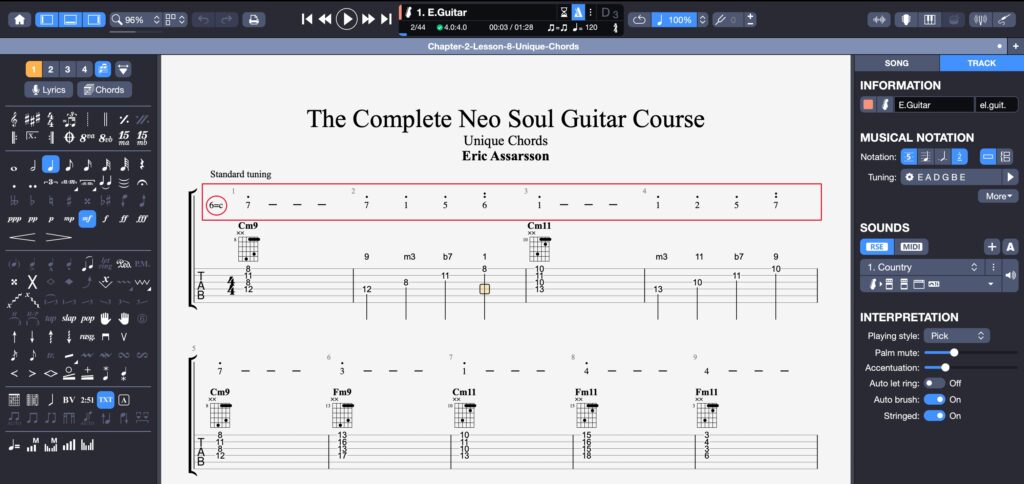
Wave the white flag
Each notation system has its own specific use. Classical musicians will prefer standard notation, while rock guitarists often choose tablature. These forms are complementary, each has its strengths and weaknesses, and it’s up to you to decide which best fits your goals.
My advice: use both! Display standard notation and tablature in Guitar Pro for an optimal learning experience.
Subscribe to the Guitar Pro newsletter so you don’t miss a thing.
Leave a comment
Your email address will not be published.



